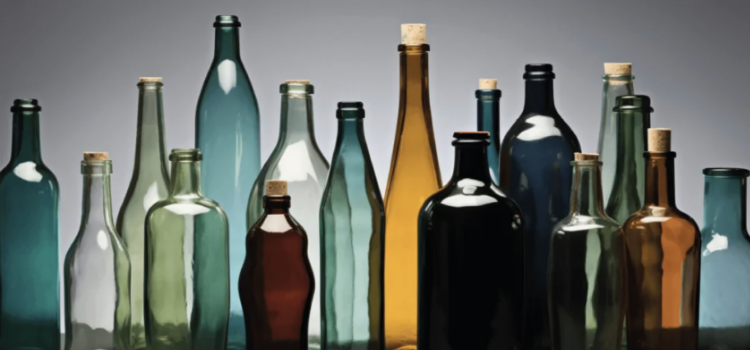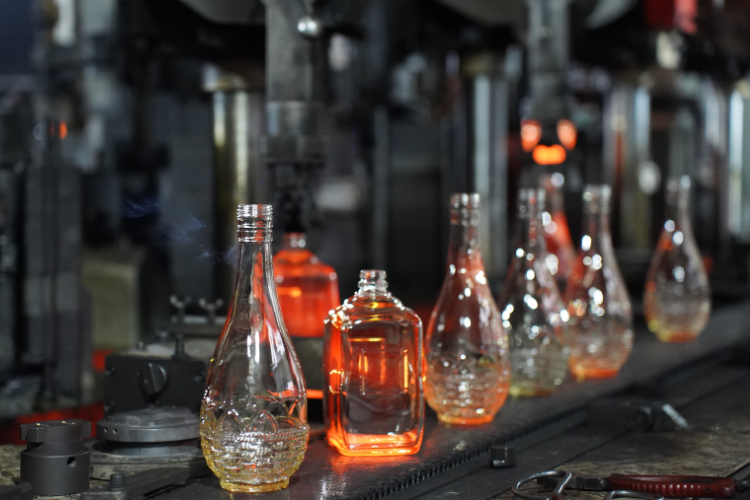
When people speak of glass, it is always associated with beauty, described in poetic and dreamlike language: its crystal clarity refracts the world's dazzling colors, captivating and intoxicating the beholder; like morning dew catching the light, it is not merely a window's garment but a magician of light and shadow, transparent and pure, reflecting the beauty of all things; glass is like you, holding endless stories and purity within its essence... Yet, when you gently touch its water-like texture, you find its transparent body contains boundless stories.
Now, let's explore the green and environmentally friendly nature of daily-use glass by looking at the glass items that accompany you like a shadow.

1. The Raw Materials of Glass are Green
The silicate compounds that form the main structure of glass contain silicon, one of the most abundant elements in the Earth's crust, which exists in nature in mineral form. The primary raw materials used in glass are quartz sand, soda ash, calcite, limestone, borax, feldspar, etc. Depending on the specific performance requirements of the glass, small amounts of other auxiliary raw materials can be added to adjust its properties. With advancements in glass technology, it is now fully possible to select raw materials that are harmless to human health and the environment. Mature safety protection measures during use further ensure the green and healthy nature of glass raw materials.
2. The Glass Production Process is Green and Eco-Friendly
The formation of molten glass involves melting prepared raw materials at high temperatures around 1500°C. The production process of glass products mainly consists of four steps: batching, melting, forming, and annealing. The entire production process has been automated and is largely digitalized and intelligent, with centralized control. Operators can set and adjust process parameters and monitor the entire production process from control rooms, significantly reducing labor intensity and improving workers' working environment.
Currently, the heat source for the glass melting process primarily comes from clean energy sources strongly advocated by the state, such as natural gas and electricity. Many enterprises have also installed photovoltaic power generation systems. With the progress in glass production technology, full oxy-fuel combustion technology and all-electric melting technology are being applied in glass production. Furthermore, the adoption of heat recovery and recycling technology within the process has greatly improved thermal efficiency, reduced energy consumption, and conserved energy.
To better reduce pollutant emissions, glass factories treat flue gas through desulfurization, denitrification, and dust removal processes, minimizing emissions to the greatest extent possible. Water use in the glass industry is primarily for production cooling. Due to the extreme stability of glass, it does not contaminate the cooling water, enabling water recycling and reuse. Essentially, no wastewater is produced throughout the production process.
Multiple quality and emission monitoring points are established throughout the glass production process to monitor product quality and gas emissions, strictly ensuring that glass production complies with national product quality and environmental protection standards.
3. Glass Has the Inherent Advantage of Being Recyclable
A significant advantage of glass material is that it can be melted and reused an unlimited number of times. This means that with effective recycling and reuse of cullet (crushed glass), resource utilization for glass materials can approach 100%. Moreover, adding cullet to the production melting process can reduce energy consumption. According to statistics and estimates, over 50% of glass in China is currently recycled and reused, representing an annual reduction of approximately 4.1 million tons of CO2 emissions released into the environment by the glass industry. In developed countries like Germany, Switzerland, and France, cullet recycling rates exceed 80%, indicating that China still has significant room for improvement in cullet recycling. Establishing a sound cullet recycling mechanism can not only reduce carbon emissions but also greatly save energy and raw materials.
4. Glass Packaging and Ware are Safer and Healthier
Major industrial countries worldwide require packaging materials to adhere to the "3R1D" principle (Reduce, Reuse, Recycle, and Degradable). Glass material can perfectly meet these requirements. In principle, glass can be reused indefinitely, and its shelf life can be almost infinitely extended. Because glass is chemically stable and does not react with the contents it packages, it ensures that the products inside maintain their original quality. This is also a crucial reason why glass is still used for pharmaceutical packaging, which demands stringent requirements for life and health, and for laboratory glassware, which requires precision in experimental apparatus.
Glass Packaging |
|
| Advantages | Disadvantages |
|
|
Glass is an inorganic, non-crystalline silicate substance formed by melting, cooling, and solidifying. Its composition is similar to that of rocks and soil in the natural environment. Therefore, it does not produce toxic chemicals in the natural environment, nor does it pollute water resources, soil, or air, making it an environmentally friendly material.
Evaluating glass packaging and ware from the perspectives of protection, compatibility, safety, and functionality, and considering the manufacturing of daily-use glass products from the standpoint of an efficient, clean, low-carbon, and circular green manufacturing system, daily-use glass products are the optimal choice for green packaging and home life in contemporary society!
(Source: China Daily Use Glass Association Official WeChat Account)
